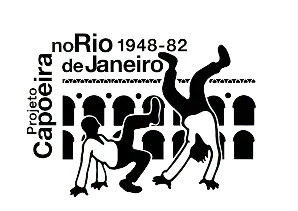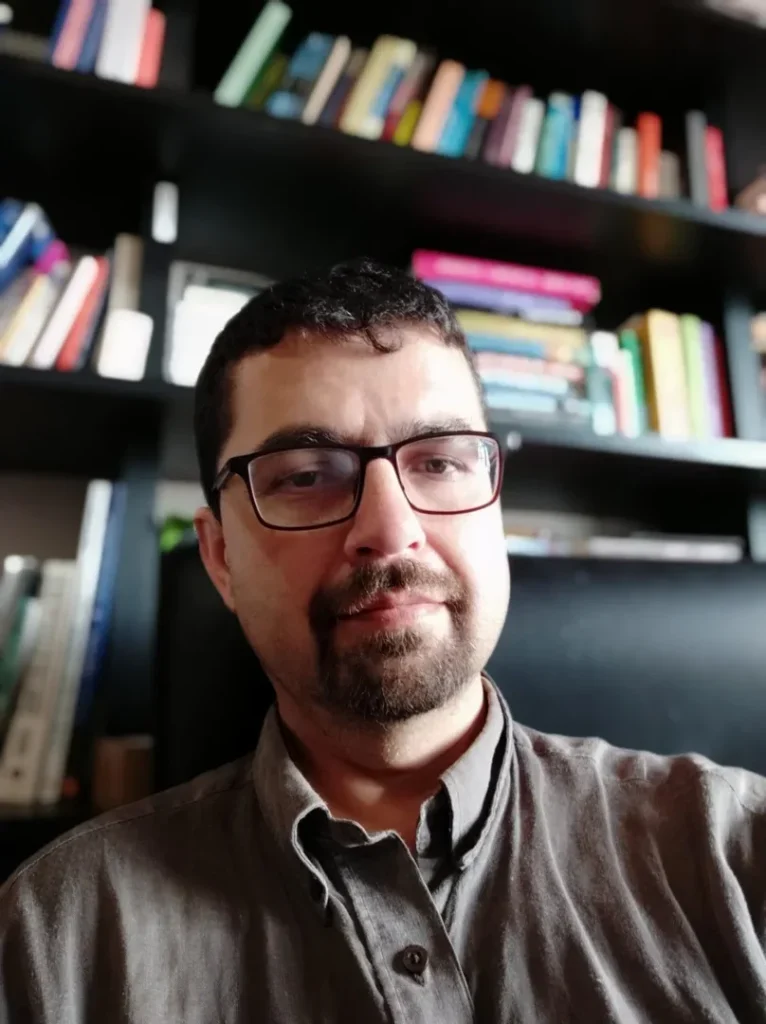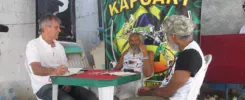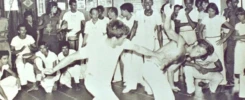By Daniel Granada.
Once the African-Brazilian martial art called capoeira was distant. Now it’s right next door. North American women and men play this blend of dance and combat in Oakland, San Francisco, Los Angeles, Denver, Santa Fe, Boston, New Heaven, Washington D. C., Atlanta and New York City” (Thompson, 1992, xi).
This is how Robert Farris Thompson begins one of the first books dedicated to the practice of capoeira in English. The preface to J. L. Lewis’ Ring of Liberation, published in 1992, was both a foreshadowing and acknowledgement of the expansion of capoeira outside Brazil. This represented a new chapter in the development of the practice permeated by ruptures and continuities, permeated by processes of creative reinvention.
The relocation of capoeira practice, both in Brazil and abroad, necessarily implies a social and cultural resignification of the practice, both in the contexts in which it is introduced, as well as with the agents who make these exchanges and translations operational. If in Brazil the transformations of the practice have already been intense, with regional characteristics having shaped different playing styles, in the case of capoeira outside Brazil, new potentials have arisen due to the agents’ creative capacity, the need for an implementation of this art in new contexts, and the possibilities existing outside the country. This has been remarkably demonstrated by the various works dedicated to map the expansion of capoeira outside Brazil which problematise the adaptation processes of capoeira and its practitioners in new contexts. These studies highlight the relationship between the “cultural” and the “political” fields within different national contexts, as well as affecting identity construction and the power relations resulting from the encounter between Brazilian practitioners and local practitioners in the United States, (Travassos, 2000) in Canada, (Joseph, 2008a, 2008b), in France (Vassalo, 2004; Ferreira, 2015 a; Gravina, 2010; Brito, 2017), in Spain (Guizardi, 2011, 2013) in the United Kingdom (Ferreira, 2015a, 2015 b; 2017), and in Portugal (Nascimento, 2015; Brito, 2016). Another study analyses the impact of the transnationalisation of the Studies such as Fernandes’ (2014), on the practice of capoeira in Germany, and Nascimento’s (2015) on the practice of capoeira in Poland and Portugal brought new elements to think the relocation of capoeira in Europe. In both works, the authors’ knowledge of the practice of capoeira and their rigorous reflection on the ethnographic material they perform stands out. In the case of Fernandes (2014), the relation of the interviewed masters with the broader Brazilian emigration process in the first wave of capoeiristas going abroad is evident, thus demonstrating the importance of folklore groups in relocating the practice outside Brazil. Nascimento (2015: 98-104) also highlighted the prominent role of folklore groups in the expansion process of capoeira outside Brazil.
The transnationalisation of the practice of capoeira, both regional, angola or other modalities, is closely associated with the movement of increasing contacts and international circulation of people. Not only Brazilians, but individuals from different nationalities, were, and continue to be, responsible for safeguarding capoeira’s memory, expansion and dissemination. The role of the pioneer capoeiristas who left in the 1970s and 1980s to appear in folklore shows in Europe and the United States and decided to stay working in small jobs, who discovered through capoeira practice ways to stay in connected to Brazil and live with dignity as artists abroad, highlights the existing inequalities at the international level. It is not by chance that in the 1980s and 1990s, airports began to be the destination of dozens of capoeiristas who, through their networks and contacts, sought the means to live from capoeira practice abroad. The years passed and these capoeiristas created schools, trained instructors, teachers, trenéis, interns, contramestres, masters, and many other classifications that capoeiristas created to differentiate the length of practice and engagement of the members of their groups.
The structure currently established abroad, which is the result of a collective process where men and women – Brazilian or not – operate, relies also on individual determination, highlighting a process implemented by people who come together and form groups around a practice that carries memory recorded in bodies, transmitted through movement imitation, songs, rhythms and behaviours. Capoeira’s contribution around the world, which unfortunately still lacks recognition in our country, is related to what makes us humans, our ability to create, to invent ways of living together. The practice of capoeira is the art of celebrating this encounter, of continuing with each new roda a game that never ends, which is reinvented at each meeting through the joy and banality of performing dialogues of bodies in motion, through dancing, making music and living together.
References:
ACETI, Monica. Devenir et rester capoeiriste en Europe: transmissions interculturelles et mondialité de la capoeira Afro-Brésilienne. 2011. 785 f. Tese (Doutorado em Sociologia) – Université de Franche Comté, Besançon, 2011. Disponível em: http://theses.fr/2011BESA1030
ASSUNÇÃO, Matthias Röhrig. Capoeira: The history of an Afro-Brazilian martial art. London: Routledge, 2005.
BRITO, Celso de. A roda do mundo: A Capoeira Angola em tempos de globalização. Curitiba: Apris, 2017.
BRITO, Celso de. A política cultural da Capoeira contemporânea: uma etnografia sobre os casos brasileiro e português. MEDIAÇÕES – REVISTA DE CIÊNCIAS SOCIAIS, v. 21, p. 97, 2016. Disponível em: http://www.uel.br/revistas/uel/index.php/mediacoes/article/view/26829
DELAMONT, Sara. The smell of sweat and rum: Authority and authenticity in Capoeira classes. Ethnography and Education, London, v. 1, p. 161-176, Aug. 2006. Disponível em:
https://www.tandfonline.com/doi/abs/10.1080/17457820600715380?src=recsys&journalCode=reae20
DELAMONT, Sara; CAMPOS, Claudio; STEPHENS, Neil. I’m your teacher! I’m Brazilian! Sport, Education and Society, London, v. 15, n. 1, p. 103-120, Jan. 2010.
DELAMONT, Sara; STEPHENS, Neil. Excruciating elegance: Representing the embodied habitus of Capoeira. ESRC National Centre for Research Methods NCRM – Working Paper Series, Southampton, p. 1-37, Dec. 2007. Disponível em: http://eprints.ncrm.ac.uk/467/
______. Up on the roof: the embodied habitus of diasporic capoeira. Cultural Sociology, London, v. 2, n. 1, p. 57- 74, Mar. 2008. Disponível em: https://journals.sagepub.com/doi/abs/10.1177/1749975507086274?journalCode=cusa
FERNANDES, Fábio Araújo. 2014. Capoeiragem: um estudo etnográfico sobre a prática da capoeira na Alemanha. Tese (Doutorado em Antropologia Social).Programa de Pós-Graduação em Antropologia Social (PPGAS) da Universidade Federal de Santa Catarina. Disponível em: https://repositorio.ufsc.br/handle/123456789/129170
GRANADA, Daniel. La pratique de la capoeira à Paris et à Londres. Paris: L’Harmattan, 2015.
_______. Tornar-se mestre de capoeira em londres: mestre fantasma e a relocalização da capoeira na europa. Antropolítica (UFF), v. 38, p. 298-324, 2015b. Disponível em: http://www.revistas.uff.br/index.php/antropolitica/article/view/336
______. La fabrication de la capoeira de Londres: Mestre Sylvia et le LSC. Revista Iluminuras, Porto Alegre, v. 18,n. 43, p. 65-101, jan./jul. 2017. Disponível em: https://seer.ufrgs.br/iluminuras/article/view/72876
_______. Práticas em movimento: a pesquisa de campo no caso da capoeira fora do Brasil Soc. e Cult., Goiânia, v. 22, n. 1, p. 299-317, jan./jun. 2019. Disponível em: https://www.revistas.ufg.br/fchf/article/view/49203
GRAVINA, Heloísa. Por cima do mar eu vim, por cima do mar eu vou voltar. 2010. 411 f. Tese (Doutorado em Antropologia Social) – Universidade Federal do Rio Grande do Sul, Porto Alegre, 2010. Disponível em: https://www.lume.ufrgs.br/handle/10183/31733
GUIZARDI, Menara Lube. Todo lo que la boca come. Flujos, rupturas y fricciones de la capoeira en Madrid. 2011. Tese (Doutorado em Antropologia) – Universidad Autónoma de Madrid, Madrid, 2011. Disponível em: https://repositorio.uam.es/handle/10486/13068
______. Para pensar las redes transnacionales: itinerarios e historias migratorias de los capoeiristas brasileños en Madrid. Vibrant, Brasília, v. 10, n. 2, dez., 2013. Disponível em: http://www.scielo.br/scielo.php?script=sci_arttext&pid=S1809-43412013000200008
LEWIS, J. Lowell. Ring of Liberation: Deceptive Discourse in Brazilian Capoeira. The University of Chicago Press, Chicago, 1992.
NASCIMENTO, Ricardo César Carvalho. 2015. – A globalização da capoeira. Tese (Doutorado em Antropologia). Faculdade de Ciências Humanas e Sociais, Universidade Nova de Lisboa. Disponível em: https://run.unl.pt/handle/10362/15257
TRAVASSOS, Sonia D. 2000. Capoeira, difusão e metamorfoses culturais entre Brasil e Estados Unidos. Tese (Doutorado). Universidade Federal do Rio de Janeiro.
VASSALLO, Simone P. 2001. Ethnicité, Tradition et Pouvoir: le jeu de la capoeira à Rio de Janeiro et à Paris. Tese (Doutorado). École des Hautes Études en Sciences Sociales de Paris. Disponível em: http://www.sudoc.fr/061648213
WESOLOWSKI, Katya. Professionalizing Capoeira: Politics of Play in Twenty-first-Century Brazil. Latin American Perspectives, Riverside, v. 39, n. 2, p. 82-89, Nov. 2012. Disponível em: https://journals.sagepub.com/doi/abs/10.1177/0094582X11427892



